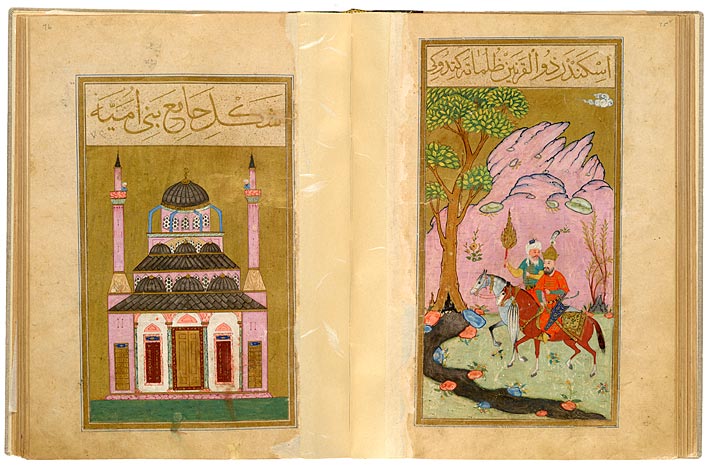
This book, made for ˓Āyisha Sulṭān (the daughter of Sultān Murad III), , contains texts relating to astrology, wonders of the world, talismans, and divination. These two miniatures illustrate the second section. Here Iskandar (Alexander the Great) and Khiżr (the green one) enter the Land of Darkness in search of the Fountain of Life. Khiżr, holding a torch, glances at Iskandar. Although the mosque on the left is identified as the ancient mosque of the Umayyads (ca. 650–751) in Damascus, the artist depicted a typical sixteenth-century Ottoman mosque. A twin manuscript painted by ˓Osmān in Paris (BnF, Suppl. turc 242) was made for Fāṭima Sulṭān, another daughter of the Ottoman ruler/bibliophile Murād III (r. 1574–1595) who commissioned the translation.
Natural History and Astrology
The miniatures presented here derive primarily from two extraordinary Islamic manuscripts that depict the natural world and the heavens. The first, Manāfi˓-i hayavān (The Benefits of Animals), is considered one of the ten greatest surviving Persian manuscripts. It dates from the reign of Ghazan Khan (1295–1304), the Mongol ruler who ordered a Persian translation of the book, and concerns the nature and medicinal properties of humans, animals, birds, reptiles, fish, and insects. The other, Matāli˓ al-sa˓āda wa manābi˓ al-siyāda (The Ascension of Propitious Stars and Sources of Sovereign), was commissioned by Sultan Murād III (r. 1574–95), an Ottoman ruler deeply interested in astronomy, cosmology, demonology, poetry, and mysticism.
